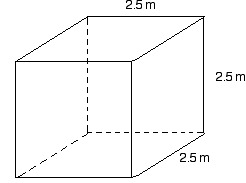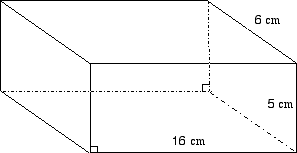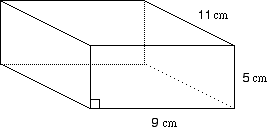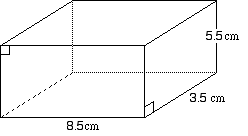1. Find the volumes of the objects by counting cubes (assume each object is solid and there are no "hidden" cubes). Each small cube has a volume of 1 cm3.
|
a
|
b
|
c
|
 |
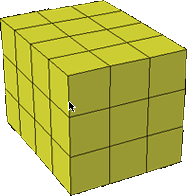 |
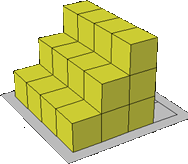 |
|
d
|
e
|
f
|
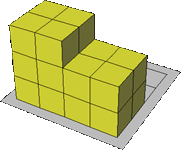 |
 |
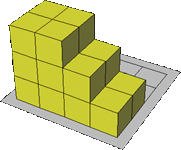 |
2. Find the volume and the surface area of the following cube and cuboid.
|
a |
b
|
|
|
|
3. A container with a rectangular cross-section measures 4m by 5 m by 6 m.
(a) Find its volume in m3.
(b) Change its lengths to centimetres and find its volume in cm3.
(c) How many litres would the container hold if full?
(d) What is its surface area in m2?
4. Find the volume and surface of the solid shown below.
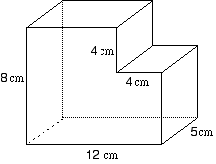
|
6. A rectangular swimming pool is 25 m long, 10 m wide and 2 m high. (a) What is the volume of the pool? (b) What is the surface area of the four walls and floor of the pool? (c) How many litres of water would the pool hold when full? |
 |
7. Find the volume and surface area of the following solid prisms:
|
a.
|
b.
|
